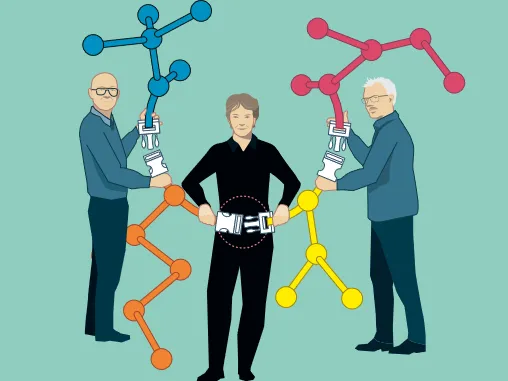What is click chemistry?

The recent Nobel Chemistry Prize turned the spotlight on click chemistry that allows molecular building blocks to snap together quickly and efficiently.
Early in October, the Nobel Chemistry Prize was awarded to a trio of scientists-Carolyn R. Bertozzi, Morten Meldal, and K. Barry Sharpless-“for the development of click chemistry and bioorthogonal chemistry". While Sharpless and Meldal laid the foundation for a functional form of chemistry, Bertozzi took it to a new dimension by utilising it in living organisms.
Sharpless, who was awarded his second Nobel Prize in Chemistry, set the ball rolling around the year 2000 when he coined the concept of click chemistry. A simple and reliable form of chemistry, the reactions in click chemistry occur quickly and unwanted byproducts are avoided. Just like how children build with their blocks, click chemistry allows molecular building blocks to snap together quickly and efficiently.
Soon afterwards, Sharpless and Meldal independently arrived at a specific chemical reaction that uses copper ions as a catalyst. Now in widespread use, this reaction is seen as the crown jewel of click chemistry.
Many advantages
While the use of copper has many advantages, including that the reactions could be done at room temperature and could involve water, they can be toxic for the cells of living organisms.
Bertozzi took click chemistry to a new level by working on the foundations built by Sharpless and Meldal.
What Bertozzi did was to develop click reactions that work inside living organisms without disrupting the normal chemistry of the cell. She called this bioorthogonal chemistry- orthogonal meaning intersecting at right angles. While in click chemistry, the molecules clicked together in a straight flat line as in a seat belt, Bertozzi discovered more stable reactions by forcing the molecules at an angle.
Endless possibilities
Even though this is a very young field relatively, the Nobel Chemistry Prize was awarded to these scientists as this field has taken chemistry into an era of functionalism. While we are still scratching the surface, click chemistry and bioorthogonal chemistry are expected to bring great benefit to humanity. Click chemistry is already in use to create polymers that protect against heat and in varieties of glue in nano-chemistry. Other use cases include developing new targeted medicines. There is hope to create a targeted way to diagnose and treat cancer, including making chemotherapy have fewer severe side effects. The possibilities are literally endless at the moment.
Picture Credit : Google